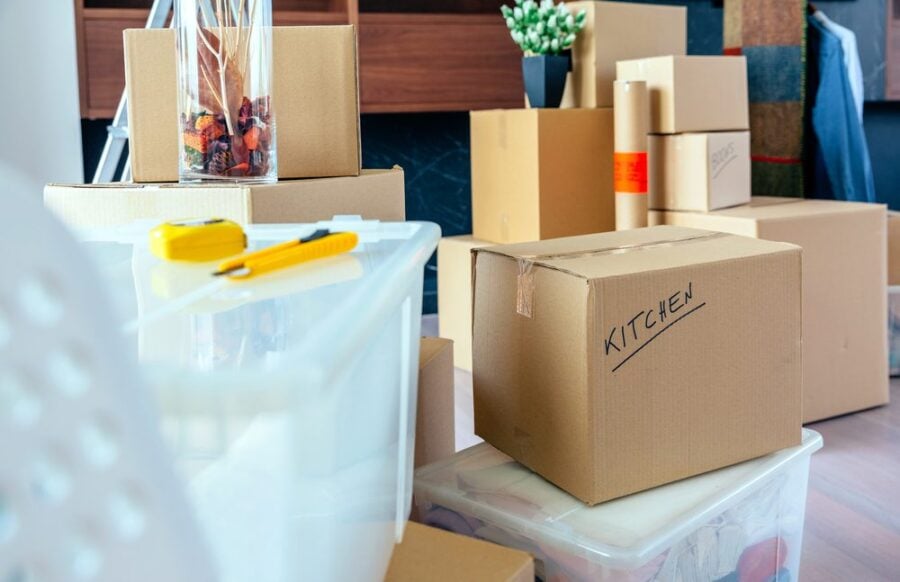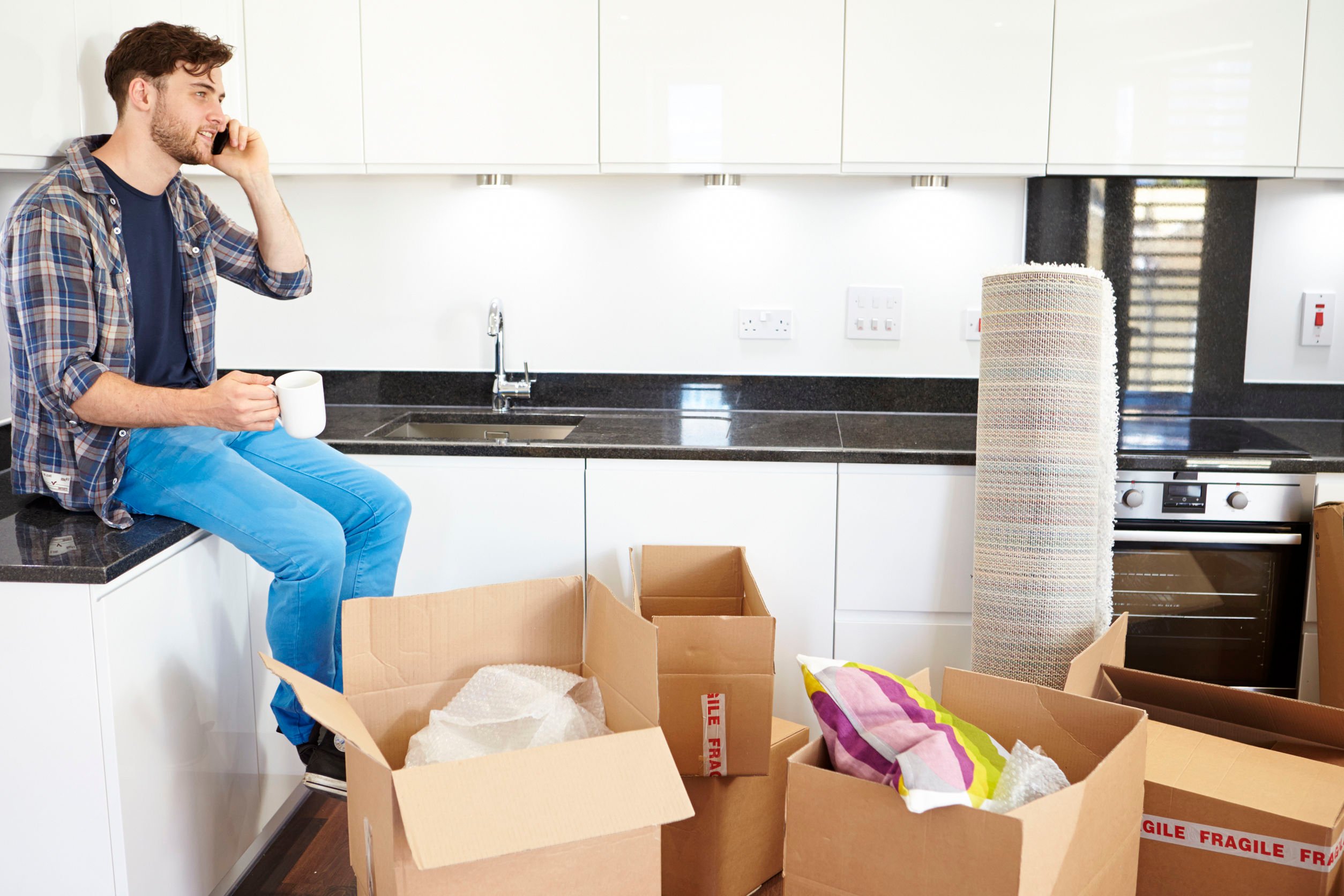Moving doesn’t have to be stressful. It can be every bit the smooth and swift experience that you want it to be. You just have to give yourself the gift of a bit of focus, pre-planning, and organization.
If you’re not an inherently organized person, this idea alone likely sounds stressful – and you have even begun yet! Have no fear, there are easy ways to get organized during your move. This will help you get through the tedious parts with minimal frustration. Follow our top 7 organizational tips for moving, and keep the excitement high and the stress low.
1. Make Lists

The first step to getting organized is understanding everything you need to accomplish. It may not seem like much when you run down a mental checklist, but trust us – once you start writing things down, you’ll see there is a bit to keep track of.
More than that, once things start in motion and the countdown begins, you’re liable to forget some things here and there. Keeping a list will help you track how far you’ve come, and how far you have left to go. Set yourself some due dates and prioritize based on when and how you can get things done.
Keep a list of things to do leading up to the move, and another for moving day. Rather than haul around a clipboard or carry around pieces of paper so you can cross things off when the time comes, track your lists on your phone. Create a checklist and give yourself the oh-so-satisfying feeling of ticking things off as you go.
2. Hire Movers Early
Whether you’re moving a block over or two states away, hiring movers early is key. Not only will you be able to consider it done (you’ve got this on your list to cross off, right?) but you’ll be more likely to get your dates. Movers can be in high demand at certain points in the year, particularly during the summer months and on weekends. If you schedule them early, you’re more likely to get to move when it’s best for you. They’re also more likely to have the truck, equipment, and personnel you need.
Starting early here means you can take your time to read reviews and hire the best mover for you. Decide whether you want help with the shifting, or you want the experts to pack for you as well. Full-service moving companies will bring the supplies, pack your boxes, disassemble your furniture, and load everything on the truck. On the other side, they’ll unload, reassemble, unpack, and take all of the packing materials away with them. That’s a few things off the list then, isn’t it…?
3. Downsize
Whether it’s you or your mover who will handle the packing, take some time to sort through your things before you reach that step. There’s no sense in packing and moving things you don’t want.
Go room by room and sort into piles: keep, donate, sell, trash. This step should also be done early, particularly if you have things to sell. Consignment shops and online marketplaces can take time, so give yourself a bit of space.

When it comes to your donation pile, make sure you know where you’ll take the items to, confirm they’ll receive what you want to give and understand when they are open for receiving. Many donation outlets have receiving days and times, so save yourself a trip by confirming before you load the car and head over.
Use this downsizing step to also sort the things you’re taking with you. If stuff from your home office has made its way to your bedroom, return it to its rightful place. This will help you when the packing step comes, as everything will be where it belongs – and where it’s destined to reach on the other side.
4. Pack Last, Open First
Starting early doesn’t mean you’re going to wear the same outfit until moving day. You can start packing early and be strategic about it. There are plenty of things you don’t see, use, or wear every day. Those can find their way into a box first.
As you begin packing, make sure you are sensible about how you fill your boxes. Don’t just shove a bunch of things in wherever they fit. You’ll want to be able to understand where the boxes go in your new home and find a place for the stuff you pull out as you go through your boxes.
Pack your off-season clothing, lesser-used small appliances, and other items you won’t need before you leave. As you get closer to the day, you’ll pack more relevant things. Essentially, you’ll end with essentials last. That means linens for the bed, fresh towels, pajamas, some daily wear clothes, the coffee pot, medications… that sort of thing. What you use the most goes in last, and will come out first on the other side.
5. Label Clearly
Sorting is only half the battle. Once you’ve sorted your items, you also need to make clear labels. Don’t make the mistake of telling yourself you’ll remember what that bedroom box contains, or that all of the boxes for the living room are one and the same. Be specific (without writing a novel) about the contents in each box.
Start with labels by room and contents. For example BEDROOM – CLOTHES – CLOSET ensures when you’re ready to hang everything, you’re opening the relevant boxes. You won’t get distracted by finding other things and can move through each room bit by bit.

Write your labels in quality, waterproof markers. This will make sure the labeling you’ve made withstands any weather or friction they encounter along the way. Label the boxes on multiple sides and the top. Things tend to shift and turn while they’re being shuffled, so make sure you can tell just what is where no matter their orientation.
6. Make Space for Packed Boxes
Packing early doesn’t have to mean you’ll step over boxes until moving day. Whether you designate a spot in your house to collect boxes or you have a corner of each room, make a space to keep the things that are packed. As you pack your things, move them into their designated spot to await the big move.
7. Schedule Service Disconnections
In all of the excitement and dynamic side of moving, things like service disconnections can be forgotten. Call your utility companies and schedule your service cancelations. Understand how they’ll determine your final bill. If it’s the water or electricity and they check the meter, take a photo before you leave so you have a record of the final reading.
This is also a good moment to submit for a change of address at the post office. It can take time for the redirection to be put in place, so submit for an address change early. Save yourself from disruption – you wouldn’t want to miss that birthday card from grandma, would you?







